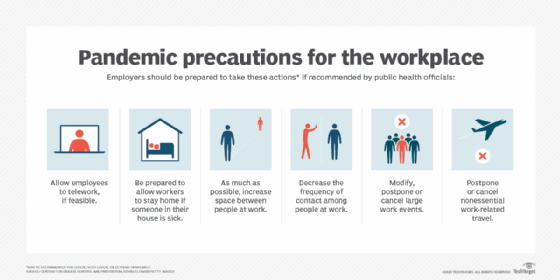microtrend
What is a microtrend?
A microtrend is a tendency in the direction of some phenomenon that is fairly pervasive within a given sphere of influence and may only last for a few years, or even months. Microtrends are common to business process management.
A fad is an example of a microtrend; it has a short lifespan and sometimes evolves into new trends. The fashion industry has many such short-lived trend cycles, particularly related to fast fashion trends. However, not all microtrends are fads.
Examples of microtrends in technology and business
The rise of microtrends play a role in technology and business. Some examples include the following:
Fewer full-time workers. Many business management changes in the last few years are microtrends within the overall trend of adopting more flexible work environments in response to the COVID-19 pandemic. One of those microtrends has businesses employing fewer full-time staff and filling the gap with part-time, freelance and contract workers.
Remote work. Another recent microtrend, which quickly expanded into a bigger macrotrend, is the dramatic expansion in remote workers who don't necessarily work normal a 9-to-5 schedule. Remote work has helped some businesses cut their payroll and other staffing and office costs. It has also popularized the hybrid work model, where some employees work in the office and some remotely.

Malware. The development of malware and other attack software is often described as a self-limiting microtrend. As a given attack method, such as ransomware, becomes prevalent, potential victims become more aware of the risk. This makes them better able to protect themselves. Simultaneously, security experts develop better tools for preventing such attacks. All of this means that ransomware becomes less profitable, so malware developers move on to something else, creating a new microtrend.
Some past microtrends were enthusiastically implemented but subsequently failed to deliver the expected benefits. Good examples of these microtrends are the results-only work environment (ROWE) and pre-pandemic attempts at telecommuting.
Ways to spot microtrends
Some companies use social media and other channels to spot microtrends. They then respond fast with new products and services that give them a competitive advantage. The challenge is to identify the event or situation that suggests something potentially important is happening. With so many social media platforms available, astute trend analysts have plenty of data from which to identify potential microtrends.
Search engines such as Google also have a variety of analysis tools that report unique and unanticipated trends. For example, a search engine report that shows how many times a URL is selected, along with the number of click-throughs beyond the homepage, can alert analysts to an emerging microtrend. Armed with data on a prospective microtrend, businesses can identify products or services that would serve the needs of activities around the microtrend.
Microtrends vs. macrotrends and megatrends
Microtrends are smaller, more focused trends. Macrotrends and megatrends are two other types of trends.
Macrotrends
Macrotrends are more pervasive and persistent over a longer time frame than microtrends. Examples of macrotrends within IT include ransomware protection and cloud-based technologies. Both started out as microtrends, but they are now in use everywhere and are unlikely to disappear soon.
Megatrends
Trends that are global and persistent are often referred to as megatrends. They are usually long-term trends that offer a window into the future. Digital transformation is a good example of a megatrend. It didn't exist 100 years ago and is part of the future for virtually everyone on the planet. Another important megatrend is climate change. Its impact on technology, such as environmental sustainability, and just about everything else will be far-reaching.
Artificial intelligence technology is rife with new trends. Find out about some of the latest trends and see if you can spot the microtrends.